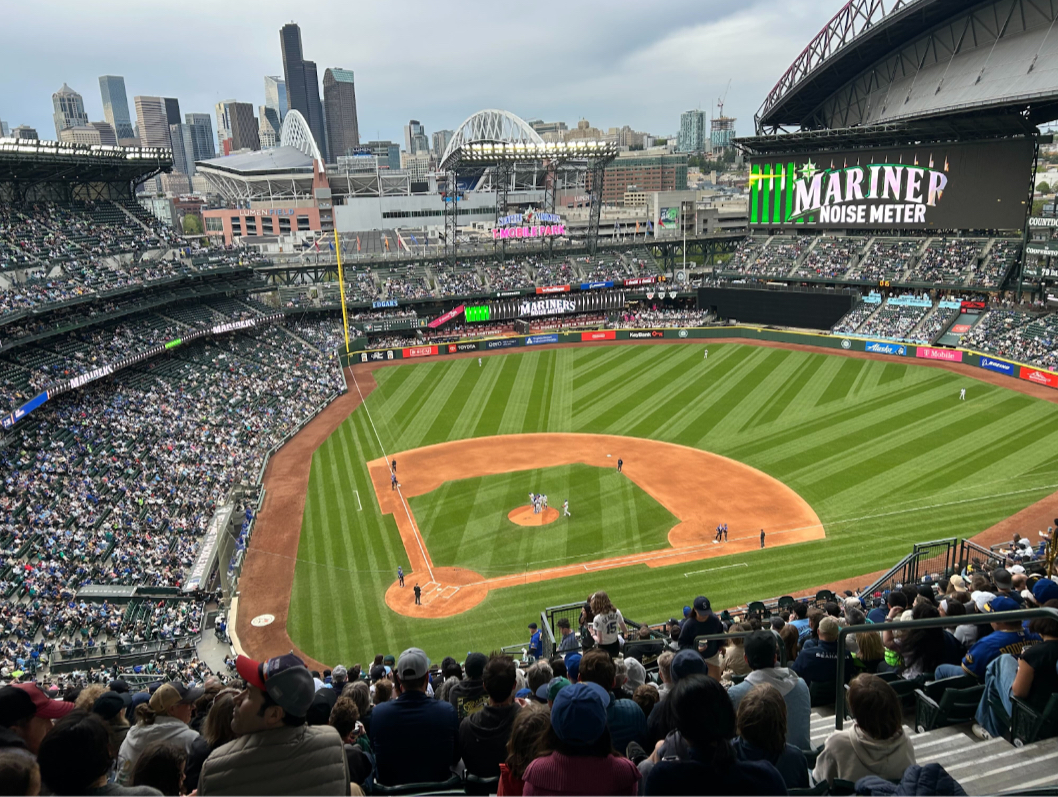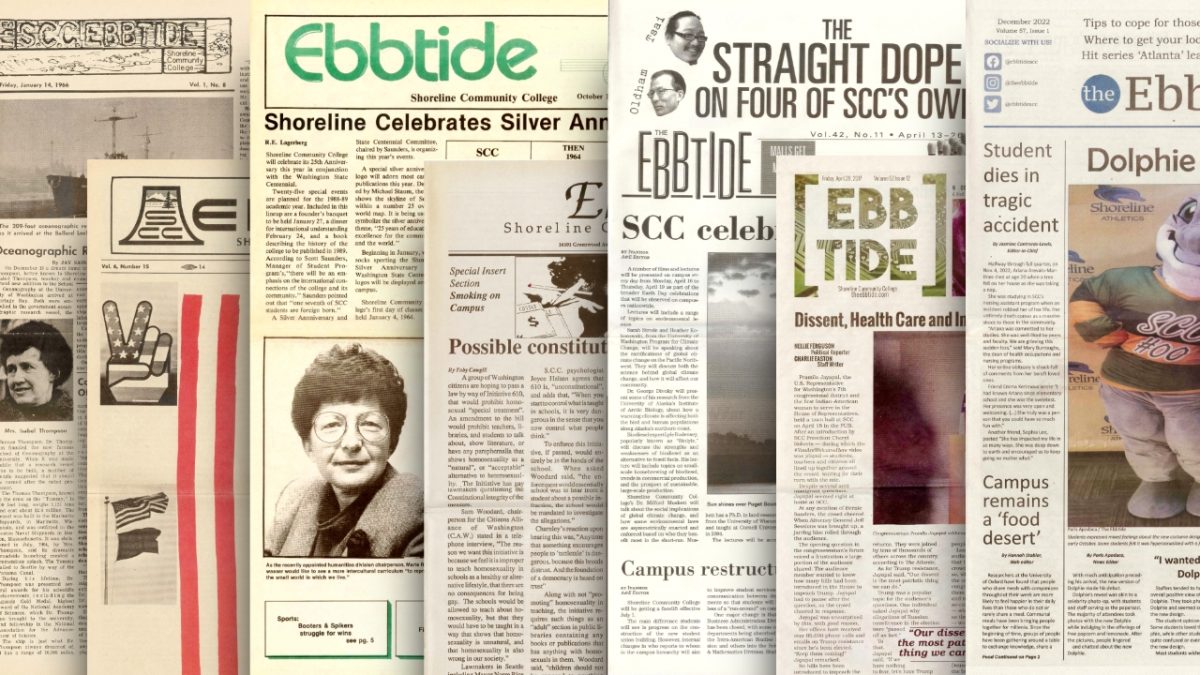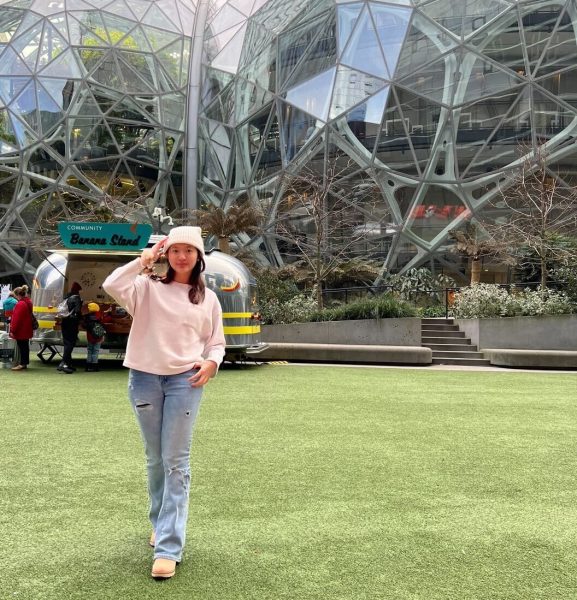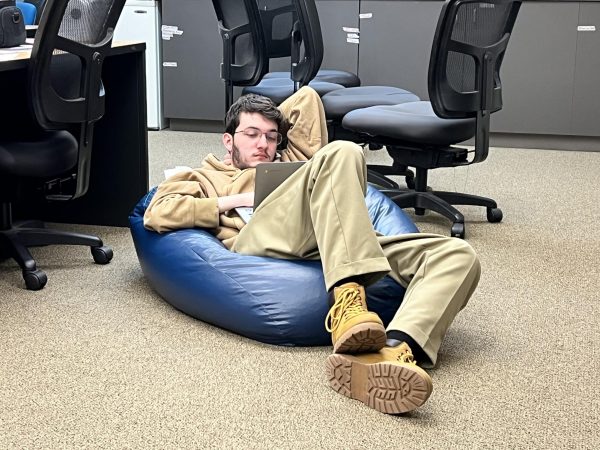As spring gains closer into the horizon, the Student Exhibition arises first lasting from Feb. 12 until Mar. 15 2024 in the Administration Building 1000, Lobby. There was a 3D portrait, inner workings of a frog, digital art, traditional sketches and best of all, a giant wooden Casio watch. Said piece was intended to be covered, but the artist was overseas dealing with personal matters.
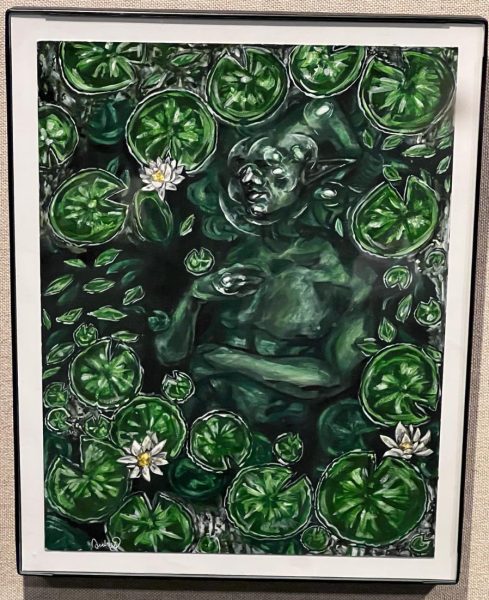
Audrey DeVet-Adair’s small portrait of a green-goblin-like creature leads us to the question “What is truly beneath the green lakes of nature?” The character in DeVet-Adair’s Waterlily is a character Audrey plans to integrate into her future novel.
“The imagery is based on Ophelia from the Hamlet, by Shakespeare.”
DeVet-Adair was inspired by John Everett Millais’ Ophelia painting which depicts her lying in the river of flowers and algae. Her laying figure is mirrored into DeVet-Adair’s green creature with water lilies circling around it. The muddy green shadows projected by an acrylic-washed medium spilled life into her underwater scenery. It is one thing to paint with multiple contrasting colors, but it is another challenge to do so with only one base color.
“I wanted to stay true to nature, there isn’t a lot of color going on looking underwater.”
DeVet-Adair’s ability to utilize a slim downed color palette is a skill envied by many, and we shall hope to see how this artist continues on her artistic journey.
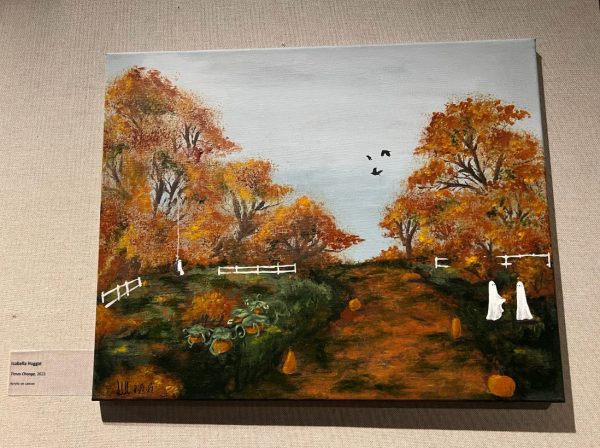
An autumn inspired piece delicately painted by Isabella Hoggat, includes little easter eggs dotted into Times Change. 13 pumpkins were visible in the piece, commemorating Hoggat’s favorite artist Taylor Swift. The three ghosts display the narrative of an unrequited love.
“One of the ghosts is handing them a pumpkin and the other is just watching them from afar.” Another addition was the 3 realistic crows which displayed Hoggart’s skill in hand-painting the finest details.
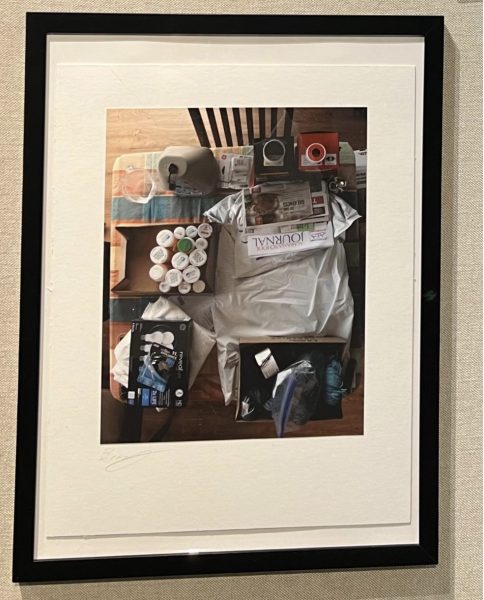
In the corner of the room, a collage of photos captured sides of Ian Bray’s grandfather’s house entangling the tragedy that struck the 1980s photographer. Bray spotlighted stilled corners of his grandparent’s house, from “Stowed” away boxes as, “they didn’t have the energy to unpack it all,” Bray said. “The hallway To Bed”, a “Table for One”, an armchair depicting that on “Here He Sits”, and a “Tripping Hazard” that influenced their grandfather’s injury beginning the series of Bray’s entire collection.
“It’s kind of like a memorial to the man who is technically still alive, but he’s not the same he’s changed.” Bray said.
This writer wished to have covered the beautiful string of stories depicted in Bray’s photographs, but this writer shall focus solely on the “Table for One” shot that captured utter loneliness and isolation faced by elders who are grappling onto the life they once had. With empty pill bottles, old letters, scattered magazines and house projects left unfinished; this picture calls upon the fading memories faced by Bray’s grandfather, which Bray described as “the isolation my grandfather was feeling.”





